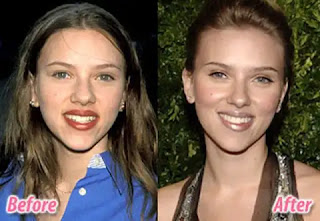Why people are opting for Ultherapy?
As non-surgical facelift alternatives become more sophisticated, here's what you should know about Ultherapy, which uses ultrasound to lift the skin and facial features.
According to the British Association of Aesthetic Plastic Surgeons (BAAPS), the number of female facelifts has decreased by 44% in recent years, with non-surgical alternatives becoming more sophisticated.
Technologies that use regenerative lasers, ultrasound, and radiofrequency energy to either stimulate a massive increase in our own collagen production or work on the facial muscles themselves to lift the features are among the no-knife options. Ultherapy, which is the new gold standard in non-surgical skin tightening and lifting, is one of the leading procedures that is both safe and effective, according to Dr. Stefanie Williams, MD.
Below, we have explained everything you need to know:
What is Ultherapy?
Ultherapy is a non-invasive procedure that lifts and tightens the skin on your face, neck, and décolletage with little to no downtime. Ultrasound energy stimulates your body's natural production of collagen and elastin, resulting in natural-looking results. It can also be used to treat specific areas, such as a brow lift or a jaw lift.
Does it only work on the skin, or the muscle layers too?
Ultrasound waves have been used for diagnostic purposes in the medical field for more than 50 years, so their safety is well established. Different therapeutic ultrasound devices, however, harness the power of these waves to deliver profound collagen-boosting effects in both the skin and the superficial muscular aponeurotic system (SMAS) – the layer of fibrous tissue that surrounds facial muscles. This results in a lifting effect on the skin and muscle layers, so a good therapeutic ultrasound device, such as Ultherapy, can not only tighten skin but also lift facial features.
Who is best suited to the treatment?
The treatment is best suited to people who have early skin sagging or laxity. A lowered brow, loose skin on the neck, sagging under the chin and jawline, and lines or wrinkles forming on the chest are all examples. It's ideal for both prevention and early intervention. The results are excellent for the right type of candidate that is, someone with mild-to-moderate sagging. However, it takes careful technical skill to provide the best treatment possible; not every treatment is the same.
How does Ultherapy differ from other skin-tightening treatments like laser or radio frequency?
Ultherapy differs from other treatments in that it delivers defined columns of higher temperature to the skin. As a result, clinical outcomes are improved. So, whereas radio frequency (and non-ablative, regenerative lasers) require a series of treatments, Ultherapy is a one-time treatment that patients who travel from abroad to see us appreciate.
What does a treatment entail, and how does it feel?
An Ultherapy treatment involves non-invasive skin tightening and lifting with micro-focused ultrasound and simultaneous high-resolution ultrasound visualisation (MFU-V), an advanced corrective and regenerative treatment that stimulates collagen production.
There may be some discomfort, but it will only last as long as the MFU-V energy is delivered." Everyone will react differently to this heat, and your practitioner will advise you on how to manage the discomfort. There is no real downtime in most cases, only mild puffiness for a few days and tenderness for up to a couple of weeks. Temporary bruising may occur in a very small number of patients with severely sun-damaged skin.
How does the visualization aspect help make it less uncomfortable?
Ultherapy's visualisation aspect is a key differentiator from other treatments because it allows us to see the areas being treated and thus avoid areas that may cause discomfort such as delivering energy to the bone.
When do you see results and how long do they last?
The best results appear in three to six months, and it is recommended to repeat the treatment in two years to maintain the results.
What risks are involved with Ultherapy?
Clinical studies have established ultrasound skin tightening as safe and effective in over half a million treatments world-wideand counting.
In conclusion, according to skin care professionals, Ultherapyis the only aesthetic MFU-V technology, which helps to increase safety. It is strongly recommended that a treatment includes simultaneous ultrasound visualization (as described above), as this allows the practitioner to see the exact tissue layers they're treating as they treat, ensuring the energy is delivered exactly where it's supposed to go.

